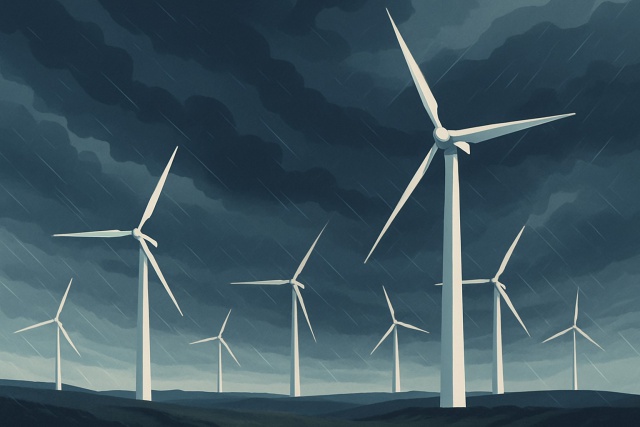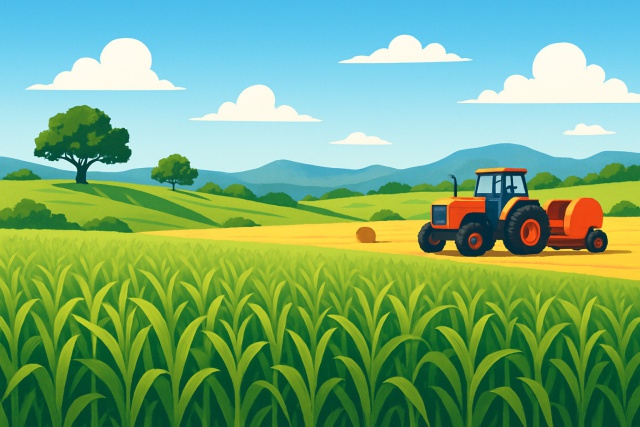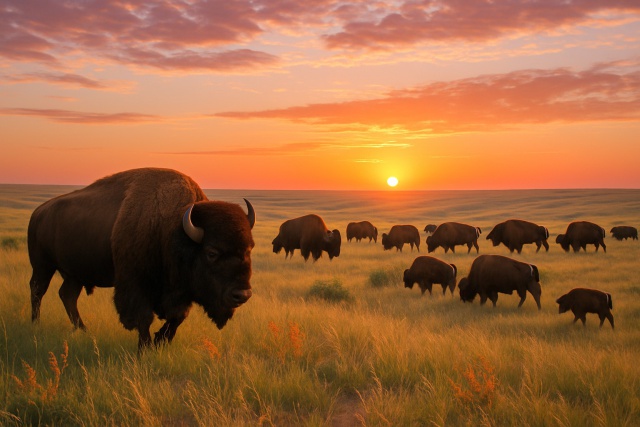What The USDA Livestock Forage Program Means For Texas Counties
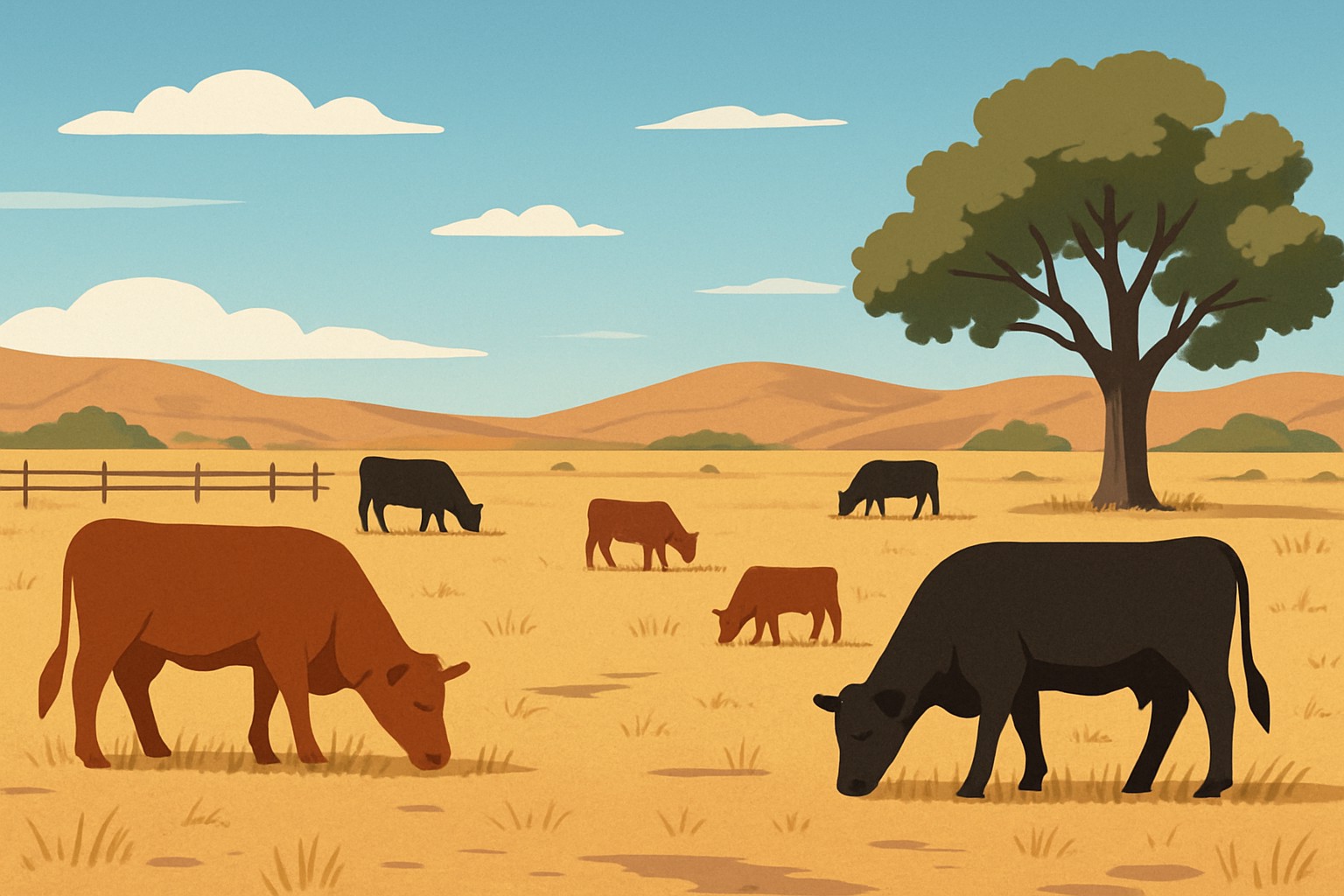
The USDA Livestock Forage Program (LFP) is a vital financial lifeline for ranchers and livestock producers facing drought. In Texas, where dry spells often shrink forage supplies to worrying levels, the LFP acts as a trusted partner to keep herds healthy and farming communities steady across many counties.
Taking a Closer Look at the USDA Livestock Forage Disaster Program Because Sometimes, Nature Has Other Plans
The USDA Livestock Forage Disaster Program (LFP) is designed to lend a financial hand to producers hit hard by grazing losses from drought or fire in federally declared disaster zones. It mostly comes to the rescue for individuals relying on pasture and rangeland to keep their livestock fed and thriving.
- This program provides a timely financial lifeline to livestock producers who’ve been hit hard by forage losses usually caused by drought or fire—those unwelcome guests nobody ever invites.
- Producers need to have covered livestock and be active participants in federal agricultural programs. It is a bit like having your ducks in a row.
- The forage covered includes native pasture, improved pasture, hayland and rangeland—basically the usual suspects in the grazing world.
- Payments kick in when official drought severity ratings or designated disaster declarations reach certain thresholds so you’re not left guessing where you stand.
- The assistance helps cover grazing losses on both privately owned and leased land but there are specific payment limits and deadlines you’ll want to keep an eye on because missing those could really throw a wrench in the works.
Understanding How the LFP Operates in Texas Counties A Closer Look
In Texas the LFP operates through county-level administration where local committees evaluate drought severity and eligibility by sifting through multiple data sources. The U.S. Drought Monitor’s classifications serve as a trusty guide to pinpoint which counties qualify for aid. These committees don’t just sit back—they gather application info, double-check losses and figure out payments based on local forage conditions and the types of livestock involved.
County committees size up drought severity by eyeballing the U.S. Drought Monitor and other local info to figure out who makes the cut.
Producers have to report their grazing losses and back it up with paperwork like livestock inventories and lease agreements—no shortcuts here.
How much you get paid depends on the type of forage lost and the number of livestock units you have. It also depends on how tough the drought has been hitting you.
Livestock producers need to apply during specific windows, either at their local USDA offices or online—timing is everything.
Payments usually land a few weeks or months after applications get the once-over. This gives producers some relief as they wrestle with ongoing forage shortages.
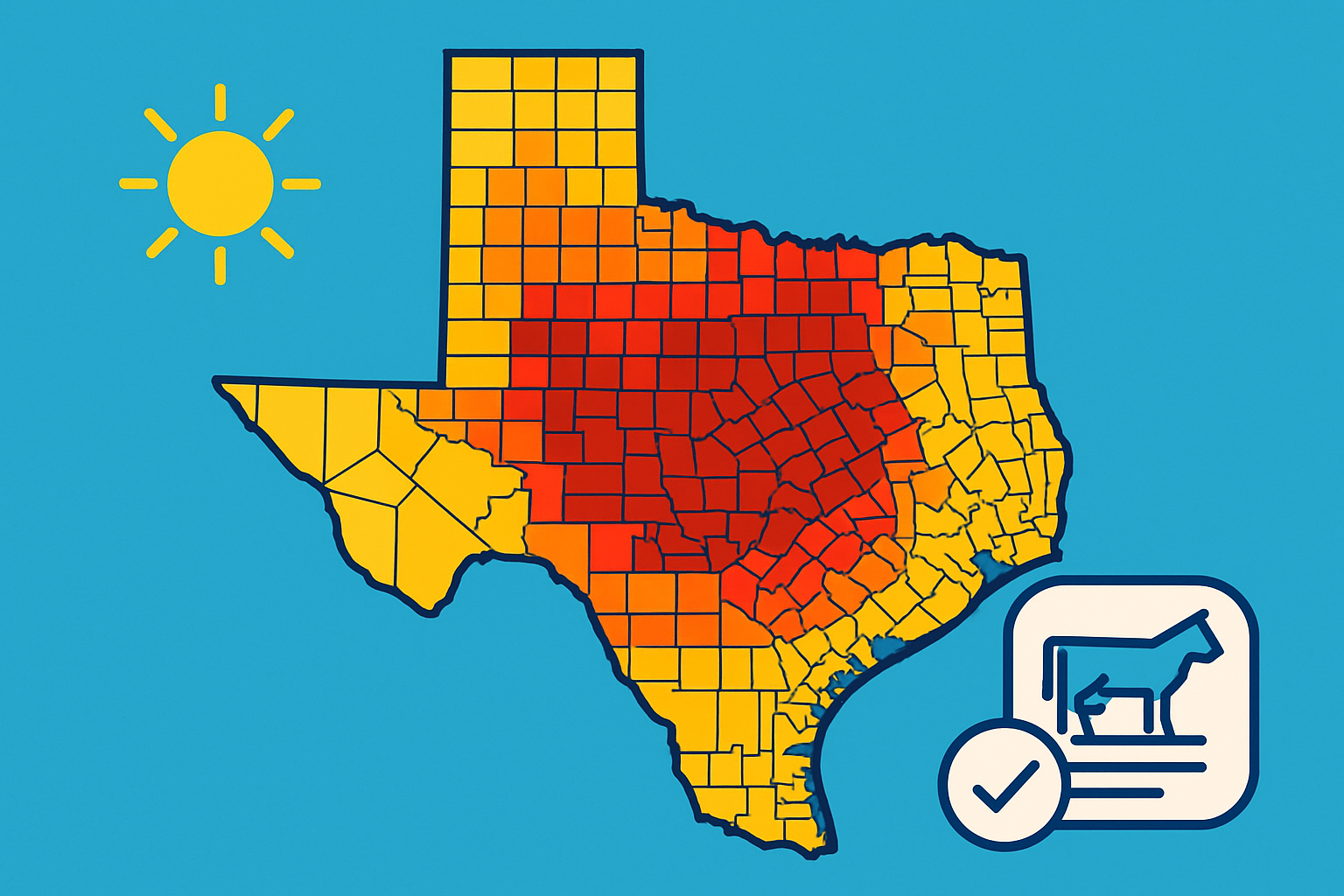
Map showing drought severity zones in Texas counties relevant to LFP eligibility
Why the LFP Matters So Much to Texas Ranchers and Farmers (And Why They’re Paying Close Attention)
Texas livestock producers frequently grapple with tough challenges like drought and extreme weather that seriously cut down on available forage, putting herd health and profits in a tight spot. The LFP steps in to ease the financial strain caused by scarce forage, helping ranchers keep their operations going while also looking out for the rangeland environment.
- It helps cut down financial losses when forage is scarce or takes a hit during drought—something every rancher dreads.
- Promotes sustainable land management by steering clear of overgrazing when resources get tight, which is easier said than done.
- Supports livestock health and productivity by making sure animals have enough feed to keep them thriving.
- Prevents dreaded emergency livestock sales that can seriously weaken the long-term strength of herds.
- Bolsters rural economies by keeping agricultural income steady and helping family ranches stay solid and secure.
"The LFP has really been a lifesaver during Texas' toughest drought spells. It’s helped us keep our herds in good shape without the usual scramble to offload livestock. And honestly, it’s not just about the dollars—it’s about preserving the heritage of our ranches and the way of life we hold dear." — Maria Gonzalez, Texas Livestock Producer
Common misunderstandings about the USDA Livestock Forage Program that often trip people up
The LFP definitely brings some clear benefits to the table but I will admit it often gets misunderstood. A lot of producers tend to mix up the eligibility requirements or jump to the conclusion that the program covers every single type of grazing loss out there. Some might even expect to see payments rolling in every year or assume that professional forage appraisals are an absolute must every single time.
- The LFP isn’t just a safety net for droughts. It also helps cover fire-related losses whenever the USDA declares a disaster. It’s like having a backup plan for those tough situations Mother Nature throws at you.
- It doesn’t cover every grazing loss, only those tied to disasters officially recognized by the federal government. So, no surprises—just the serious events.
- Payments are not given out every year. They depend on specific disaster declarations and certain conditions, which keeps things fair and balanced.
- Producers don’t need to pay for fancy forage measurements because the USDA relies on official data sources. This saves you both time and money, which is always a plus.
- Here’s a nice bonus: joining this program doesn’t exclude you from other USDA assistance options. Many of these programs actually work well together, strengthening your support network.
A Straightforward Guide to Navigating LFP Benefits in Texas
Texas livestock producers aiming to cash in on LFP benefits will find the application process straightforward but it requires a careful eye on deadlines and paperwork. It is smart to contact the local USDA Service Center early, have all your records ready, and follow the steps closely.
See if you qualify by checking your county's drought status and whether your livestock operation is part of any USDA programs—this step can save you headaches down the line.
Swing by your local USDA Service Center to get tailored guidance and grab the application forms—a little face-to-face help goes a long way.
Gather the usual suspects: proof of your livestock numbers, leases and the acreage hit hard for grazing. Having these ready upfront makes life easier.
When the signup period rolls around, make sure you turn in your application with every required detail and signature—no shortcuts or you might find yourself back at square one.
Keep a close watch on your application status through USDA updates and get set to receive payments once the paperwork clears. It’s a bit of a waiting game but worth it in the end.
The Role of the LFP Within USDA Support for Texas Agriculture
When it comes to backing Texas agriculture, the Livestock Forage Disaster Program, or LFP for short, really steps up to the plate. It’s a key piece of the USDA’s safety net, designed to lend a helping hand when droughts or wildfires put ranchers in a tight spot. You might say it’s the quiet hero working behind the scenes to keep the wheels turning for livestock producers across the Lone Star State. It’s all about providing timely financial relief to those who face grazing losses, helping them weather the storm—and sometimes we all need a little weathering, right?
The Livestock Forage Disaster Program is one piece of the bigger puzzle when it comes to USDA disaster and risk management programs designed to back Texas agriculture. It teams up with other initiatives like the Livestock Indemnity Program (LIP) and the Emergency Assistance for Livestock, Honeybees and Farm-Raised Fish Program (ELAP). Each steps in to cover different kinds of losses. Together these programs build a safety net that producers can lean on depending on their specific situations, weather woes and livestock hurdles.
| Program Name | Purpose | Eligibility Criteria | Benefits Provided | Relationship to LFP |
|---|---|---|---|---|
| Livestock Forage Disaster Program (LFP) | Provides much-needed financial help for forage losses caused by drought or fire, easing the burden on producers | Livestock producers in designated disaster areas who participate in farm programs | Payments based on the severity of forage loss to help cover those often hefty feeding expenses | The go-to support for forage losses that plays nicely with other assistance programs |
| Livestock Indemnity Program (LIP) | Offers compensation for those heartbreaking livestock deaths due to disease or severe weather events | Producers who have documented livestock deaths | Financial reimbursement for eligible livestock losses, helping soften the blow | Tackles direct livestock losses while LFP focuses on feed shortages, so they really complement each other |
| Emergency Assistance for Livestock, Honeybees and Farm-Raised Fish (ELAP) | Steps in to help cover losses that crop insurance or LFP just can’t touch, including those pesky honeybee colony losses or unexpected feed shortages | Producers with eligible losses from disasters not covered by other programs | Payments or cost-sharing for losses that don’t quite fit under LFP or LIP umbrellas | Patches the holes, especially for people with a variety of livestock on their hands |
| Non-Insured Crop Disaster Assistance Program (NAP) | Provides financial assistance when insurance isn’t an option, covering losses on crops like hay and other forage crops | Producers growing non-insurable crops like hay and forage | Indemnity payments for eligible crop losses that can be a lifesaver | Helps forage crop growers and acts as a handy companion to LFP for grazing losses |
| Agriculture Risk Coverage (ARC) / Price Loss Coverage (PLC) | Delivers income support tied to market ups and downs, influencing grain and feed prices in the process | Producers enrolled in farm safety net programs | Income support payments designed to help stabilize income streams, though not tied directly to disaster losses | Offers a layer of economic stability that nicely complements the disaster-focused assistance from LFP |
Looking Ahead at the Future of Livestock Forage Support in Texas What Lies Over the Horizon
As climate change shakes up weather patterns, Texas is no stranger to droughts that hit more often and pack a harsher punch. This is why the USDA Livestock Forage Program (LFP) and similar initiatives are becoming more vital than ever. USDA policies appear to be catching up by leaning into fresh technologies for drought monitoring and providing aid that is quicker and more adaptable to the situation.



